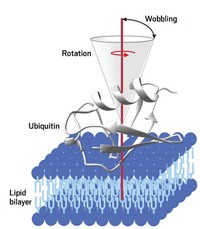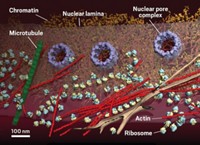Advertisement
Grab your lab coat. Let's get started
Welcome!
Welcome!
Create an account below to get 6 C&EN articles per month, receive newsletters and more - all free.
It seems this is your first time logging in online. Please enter the following information to continue.
As an ACS member you automatically get access to this site. All we need is few more details to create your reading experience.
Not you? Sign in with a different account.
Not you? Sign in with a different account.
ERROR 1
ERROR 1
ERROR 2
ERROR 2
ERROR 2
ERROR 2
ERROR 2
Password and Confirm password must match.
If you have an ACS member number, please enter it here so we can link this account to your membership. (optional)
ERROR 2
ACS values your privacy. By submitting your information, you are gaining access to C&EN and subscribing to our weekly newsletter. We use the information you provide to make your reading experience better, and we will never sell your data to third party members.
Biological Chemistry
Superresolution methods reveal new picture of the endoplasmic reticulum
Region of organelle long thought to be made of flattened membranes is actually a dense array of tubules
by Celia Henry Arnaud
October 31, 2016
| A version of this story appeared in
Volume 94, Issue 43
With emerging superresolution microscopy techniques, biologists can get more detailed pictures of structures they thought they already understood. The most recent biological structure to yield its secrets is the endoplasmic reticulum. The ER, which stretches from the nuclear envelope to the edges of a cell, is home to many biological processes, including protein and lipid synthesis. In conventional microscopy images, the peripheral portions of the ER appear to include flat membrane sheets. But that picture is wrong, according to a new study led by Jennifer Lippincott-Schwartz of Howard Huges Medical Institute’s Janelia Research Campus and Craig Blackstone of NIH (Science 2016, DOI: 10.1126/science.aaf3928). To probe the ER in multiple types of cells, the team used four superresolution optical microscopy methods, which provide images at a resolution that exceeds conventional microscopy limits, as well as focused ion beam scanning electron microscopy. With these methods, the researchers observed that the peripheral ER is actually made of a dense matrix of tubes instead of flat membrane sheets. They acquired images fast enough to observe the tiny tubes undergoing rapid movement and interconversion between tight and loose arrays. The tube organization may allow the ER to rapidly change its conformation as necessary to perform its many functions, the researchers speculate.





Join the conversation
Contact the reporter
Submit a Letter to the Editor for publication
Engage with us on Twitter